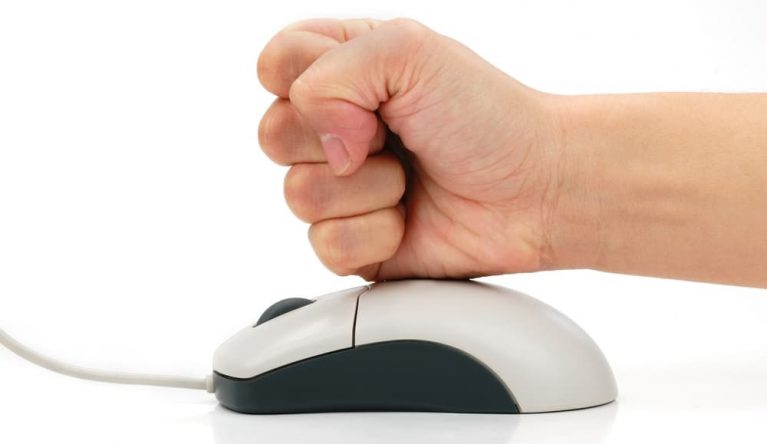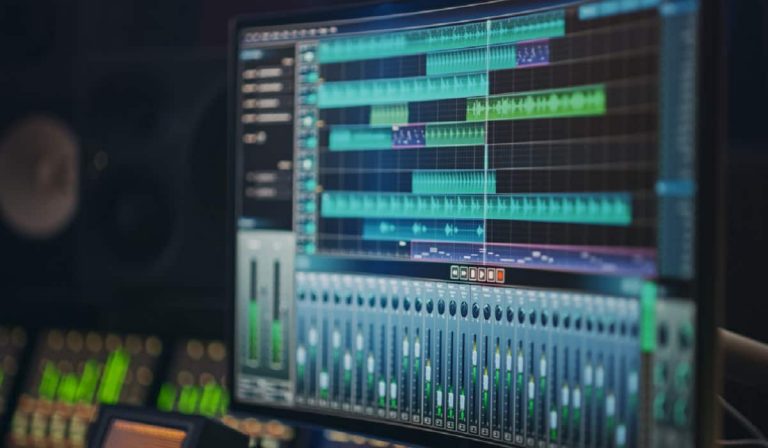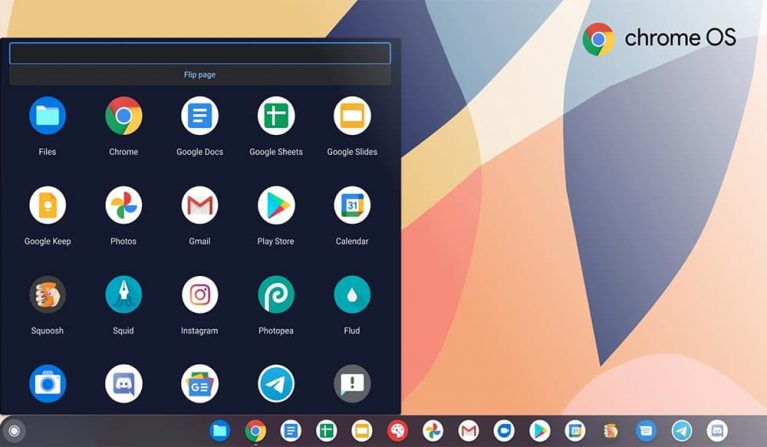Shift Key on Keyboard: Quick overview & Insider Tips
In our help forum we are frequently asked: “Where is the Shift key on the keyboard?”. Or, “What does the Shift key do”? So here we have a brief explanation of this important key, which some may also know as the Shift key.
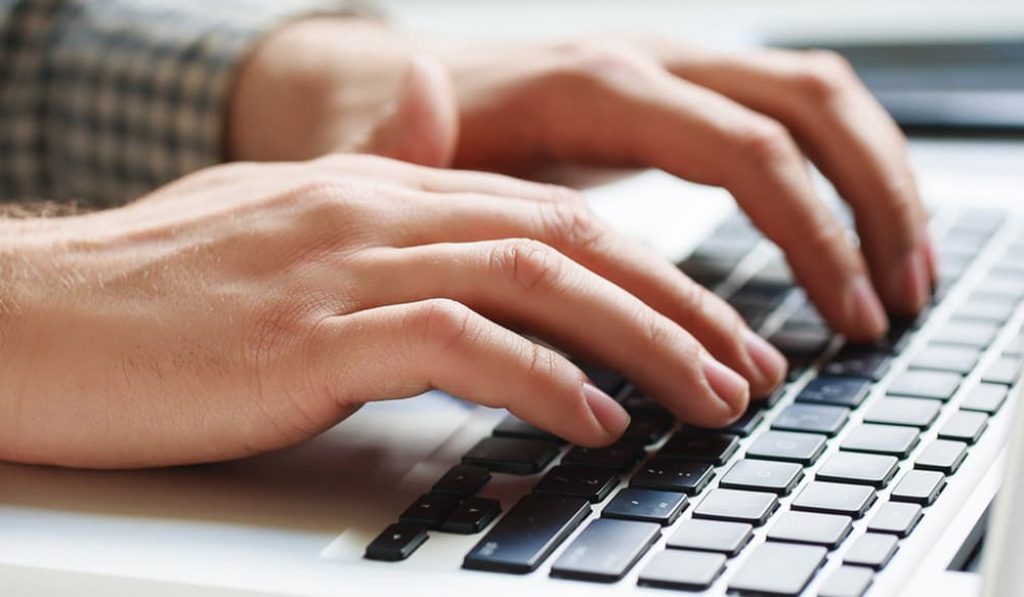
The English term for the Shift key is Shift key, but “Shift key” fits quite well: With this key you can switch between lower and upper case letters. Therefore, the key is very important to be able to write capital letters. You also need the key to write certain key combinations or special characters like the $ sign: The Shift key is used to switch between two different keyboard layouts.
However, the Shift key is most often used for capital letters: If you press the Shift key, you can type capital letters. Therefore, many keyboards simply have a thick arrow printed on them. If you press the key together with the letter “a”, the computer writes a capital “A”.
The Shift key is not only used to capitalize letters – but it also has a lot of cool functions that even professionals might not know yet.
Where is the Shift key on Windows PCs?
First things first: The key is located in the lower-left corner of the keyboard, just above the Ctrl key. More precisely, it is the second key from the bottom on the left side. It often has no label and is usually indicate by a small arrow pointing upwards: ↑
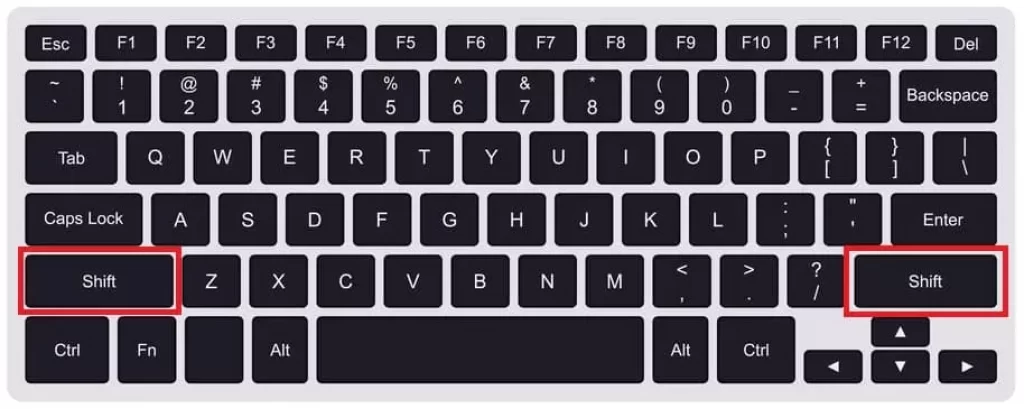
In the picture, the Shift key is with red rectangles.
On most keyboards, the Shift key is the second largest key after the Space bar, and it is usually found twice: on the left side of the keyboard on the one hand and on the right side on the other. Both keys almost always have the identical function – but only almost. In some applications or games, both Shift keys are sometimes assign differently.
Shift key on Mac
Unlike other modifier keys, you can also find the Shift key on Apple computer keyboards. It performs the same function there as it does on the PC – namely, to “toggle” other keys.
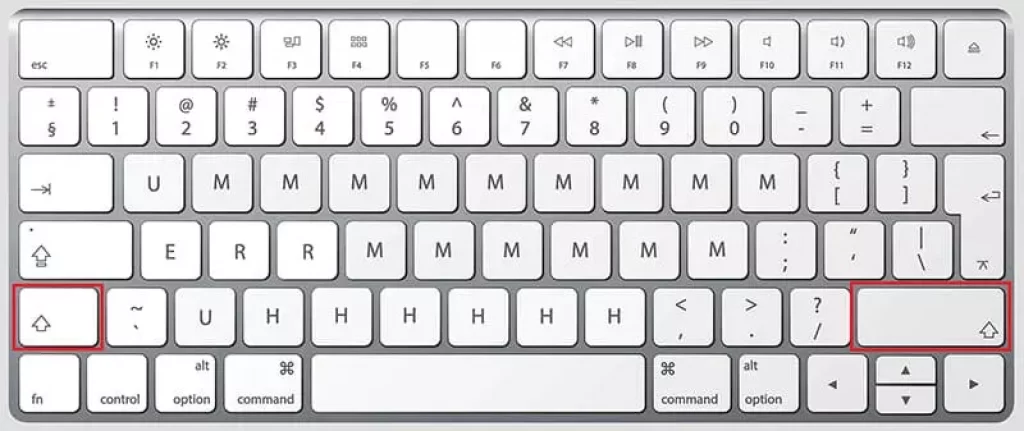
On Apple keyboard shortcuts, the Shift key is with an up arrow, similar to the image above (see also our article Mac Keys, section Shift Key Mac)
What does Shift do?
The special thing about this key is that it only works with letters: If you press a key combination or a special character, nothing happens. To type these characters, you still have to use the shift key. If you want to type the $ character while holding down the Caps Lock key, you still have to press Shift + 4.
With Shift, you write in capital letters.
The Shift key is one of the most used keys on the keyboard, where it is mainly use for capitalization. For example, holding down the Shift key while pressing “a” generates an uppercase letter “A.”
Use Shift to generate special characters.
For keys that are not letters, you usually use Shift to generate a special character. The computer always outputs the character or symbol printed at the top of the respective key. So if you press Shift and 1 at the same time, you will generate a ! analogously, pressing Shift + 2 will generate the quotation mark (“), pressing Shift + 3 will generate the paragraph symbol (§), and so on.
With Shift, you switch.
But Shift can do much more – it often modifies a particular mouse action or key combination. Below is a brief overview.
Keyboard shortcut with Shift Key
You need the Shift key for numerous key combinations: First of all, the keys that are print above the row of numbers at the top. For example, you can use “Shift + 1” to make an exclamation mark, “Shift + 2” to make quotation marks, and the Shift key together with keys 8 and 9 to make parentheses.
- Ctrl + Shift + n: New Windows folder
- Shift + Del: Deletes the selected file without the recycle bin
- Alt + Shift: Switches the keyboard language
- Alt + Tab + Shift: Switches to the previous window in the program list
- Windows + M + Shift: Maximizes the minimized windows
- Ctrl + Shift + Esc: Opens the task manager
- Shift + →: Marks to the right one character at a time. If you also press Ctrl, it is highlight word by word.
- 5x Shift: Press Shift five times in a row to activate the sticky function
- Shift + Tab: Jumps back or to the left in many programs. In Excel, for example, you jump to the cell on the left
- Ctrl + Shift + S: Take a screenshot
- Win + Shift + ↑: Enlarges the window in the direction of the arrow keys and snaps it into place.
The most useful Shift combinations
But Shift can do much more – often, it also modifies a particular mouse action or key combination. Here is a brief overview:
- The Shift key is often use in conjunction with the arrow keys to select text.
- Often, the Shift key modifies the program behavior slightly. For example, if you hold down the Shift key while clicking on a link, many web browsers will open the page in a new window (without Shift: in the same window).
- Similar in effect: Holding down the Shift key while clicking on a shortcut will open a new instance of a program.
- Shift is also interesting in combination with the mouse wheel: Shift + mouse wheel down takes you back to the last page in some browsers, Shift + mouse wheel up takes you forward in the history. Image viewers like to use the Shift + mouse wheel to zoom in and out.
- The key can also modify various control and Alt keys. For example, if you use Alt-Tab to scroll through open windows, Shift-Alt-Tab changes in reverse order.
- Shift is sometimes use to modify the function keys. Modern Microsoft Windows keyboards usually have only 12 function keys; you must use Shift + F1 to type F13, Shift + F2 for F14, and so on.
- Together with the mouse and keyboard, the Shift key enables multiple selections. For example, if a file is selected in a list (Windows Explorer), Shift-clicking on a file further down in the list will select the files you have clicked – and all those in between! (For selective choices, see Ctrl )
- In DTP or drawing programs, Shift often limits the shape to a strictly horizontal or vertical line. This makes it relatively easy to create squares and circles in graphics programs.
- Right-clicking usually brings up a context menu. In Windows Explorer, Shift + right-click brings up additional context menu items. Among other things, the popular item Copy as path appears.
Shift key and the numeric keypad
On the numeric keypad (the Numeric keyboard), the Shift key activates the function symbolized under the number.
So Shift and Numpad-2 move the cursor down. Shift + Numpad-1 jumps to the end of a line in many text programs (Word, Notepad, etc.).
Caps Lock – the shift key for Shift
Another key above the left shift key additionally facilitates the input of several capital letters: The key, which is “Shift Lock” or “Caps Lock” in English, ensures after pressing that the subsequently typed letters are written as capital letters. Only when the key is press again, the letters are write in lower case again.
The “Caps Lock” key permanently locks the Shift function (Caps Lock is located directly above the left Shift key).
Once pressed, all letters are now capitalized, and (when pressing non-letters) special characters or special functions are activated. This continues until you press Caps Lock again.
Shift shortcuts and other cool features
The Shift key is often the gateway to slightly modified functions. For example, if you delete a file while pressing the Shift key, you will send it ad hoc to digital nirvana – there is no need to go to the Recycle Bin. This can be desirable if you do not want to have sensitive files in the recycle bin.
Also interesting: If you move a file in Windows Explorer via drag-and-drop while holding Shift, the file is moved instead of copied on different drives. The logic goes like this:
- Drag and drop a file within the same drive (for example, within C:).
- Without Shift (default): file will move.
- With Shift: copy the file.
- Drag and drop a file to another drive (example from C: to D:)
- Without Shift (default): copy the file.
- With Shift: file will move.
The Shift key is also part of many shortcuts (shortcut=key combination) under Windows and iOS. Here is a selection of useful keyboard shortcuts that you may not yet know.
What do I need the Shift key for?
When you hold down the Shift key, you activate the second assignment of a key. Thus, lowercase letters become uppercase letters when the Shift key is held down. The second assignment is print on keyboard keys except for the letters above the first assignment. Example: A “7” becomes a “/.” You can also write special characters such as “*” and “%” in this way.
Snap function: If you press the Shift key several times in succession, Windows activates the so-called snap function by default. But you can deactivate it later.
What does “Shift” mean?
The word “shift” comes from English and means “change,” “shift,” or “shift.” The meaning comes from old typewriters: The platen was raised or lowered to write upper or lower case letters if you pressed the shift key there.
Anyone who writes on a keyboard uses the shift key every day. If it didn’t exist, our keyboard would probably be three times as big because all the special keys and second assignments would take up a separate key. The same is probably true for the Alt key.
Frequently asked questions about the Shift key
Where is the shift key?
On the far left, second from the bottom. It is usually marke with an arrow pointing upwards.
Where is the shift key on a Mac?
On the far left, second from the bottom. It is usually mark with an arrow pointing upwards.
What is the Shift key?
The Shift key is use to switch between two keyboard functions. The classic use case is to create capital letters with it. But it also helps to create symbols and characters and is also part of many keyboard shortcuts.
What does the Shift key look like?
The Shift key is rectangular in shape and usually has an arrow printed on it pointing upwards. More rarely, the word “Shift” is also print on the key.
Why are there two shift keys on the keyboard?
To put it casually: Because the keyboard is too wide. For example, a capital “P” is hardly possible with the left Shift key and the left hand – the keys are simply too far apart. But it works with the right Shift key.
Where is the shift key on the calculator?
Some calculators also have a shift key. Again, it is usually used to switch between functions when the keys are double spaced. Many models don’t have it at all, but it’s usually placed at the top left if they do.
Who came up with the idea of a shift key?
IBM, TI, and other tech companies created many milestones of the computer world sometime after World War II in the labs of Bell. On the other hand, the shift key actually dates back to 1878. Who exactly invented the shift key is no longer known, but the exact model is: The Remington Standard 2 typewriter was the first to feature such a key. The virtual typewriter museum has details in English.
You can also read these articles:
- Open Winmail.dat: How to open a .DAT file?
- Letter Opener: Open the Winmail.dat on iPhone, iPad and Mac
